DIY Kaiser washing machine repair
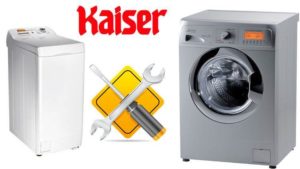 Repair of Kaiser washing machines is in many ways similar to repair of automatic washing machines of other brands, but there are still some specifics. This specificity is manifested primarily in the most common malfunctions. We decided to talk in more detail about these faults, as well as how best to fix them yourself.
Repair of Kaiser washing machines is in many ways similar to repair of automatic washing machines of other brands, but there are still some specifics. This specificity is manifested primarily in the most common malfunctions. We decided to talk in more detail about these faults, as well as how best to fix them yourself.
What breaks more often?
What parts most often fail in Kaiser washing machines? To answer this question, we cannot do without the generalized statistics provided to us by leading service centers. Based on these data, we concluded.
- Most often, the heating element breaks in washing machines of this brand. It is difficult to say what this is connected with; perhaps it is the quality of the part, or perhaps the design features of the washing machine. However, service centers most often receive requests from citizens regarding the problem of heating water in washing machines. Kaiser.
- In second place are problems with collecting and draining water. By the way, this problem occurs not only with Kaiser washing machines. Any other washing machine has the same sin. Take at least a list of typical Electrolux washing machine malfunctions.
- In third place are complaints from citizens about their Kaiser washing machine leaking. Hoses and pipes are the weak point of all automatic washing machines. Some companies' washing machines suffer from this “disease” more, some less, but the fact that this problem is always present is a fact.
For your information! Kaiser washing machines sometimes have problems with the hatch cover, control module, belt, motor, but all of them are rare compared to the above breakdowns.
These are the top 3 problems with Kaiser washing machines. We decided to discuss them first and, most importantly, tell you how to deal with these problems and how to prevent them in the future, because it is always better to carry out prevention than to later spend money on repairing a washing machine, and possibly on repairing a neighbor’s apartment.
The water doesn't heat up
Kaiser washing machines are most often equipped with a 280 mm standard 2000 W automatic washing machine heater. The spare part itself can be quite easily purchased at specialized retail outlets or ordered from an online store, the approximate price is 16 dollars, plus 2-3 dollars postage. Total cost maximum is $19, provided you do the replacement yourself. If you invite a specialist, the price will increase by 2 or even 3 times, so self-repair is preferable. What are we doing?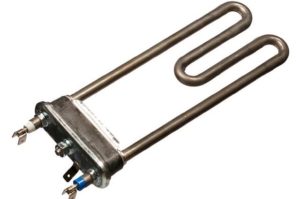
- We disconnect the washing machine from the electrical network, turn off the water and disconnect the washing machine from the water supply and sewerage.
- We pull it out of the niche into a free place, and then unfold it.
- Unscrew the screws holding the back wall of the washing machine and remove the back wall.
- At the bottom of the washing machine tank we find two rather large contacts to which wires go - this is the heating element.
- We take an ohmmeter or multimeter, set it up, and then measure the resistance of the heating element. The operating parameter will be about 26 ohms; if the device shows significantly less, it is faulty and needs to be replaced.
- Disconnect the wires from the contacts of the heating element and temperature sensor.
- We unscrew the fastening screws and pull out the heating element.
Note! It’s a bit difficult to pull out the ten, but you shouldn’t pull too hard on the contacts either, you can tear it out.It is better to pull out the heating element slowly, swinging it from side to side.
- We take a new heating element out of the package, check it with an ohmmeter, insert it in place of the old one and make sure that it “sits in the niche”.
- We connect all the wires to the contacts, put the back wall in place, place the machine in the niche and connect the washing machine to the water supply, sewerage and electricity. We check and make sure that everything works.
Leaks
If you find a large puddle under your Kaiser washing machine either after washing or during a break between washes, it means there is a leak somewhere. Before looking for a leak, you need to take urgent measures to protect your and your neighbor’s apartment from flooding. Turn off the tap that supplies water to the washing machine, then place several large rags under the body of the washing machine, open the hatch located on the front wall in the lower right corner, and unscrew the garbage filter.
Once you have drained the remaining water from your Kaiser machine and mopped up the water with a rag, you can begin to find the cause of the leak. Let's start with the hoses, since they are the easiest to check. Let's inspect the inlet and drain hoses. If the matter is drain hose, which means it needs to be changed. Or perhaps the inlet hose has burst, but in this case there will be more water and the leak will be more obvious. Replacing the drain and inlet hoses can be done quite simply, so we won’t write about this separately.
The next possible reason is the pipes. If the leak is inside, then to find it you will have to disassemble almost the entire Kaiser washing machine. It will not be easy to do this on your own, so it is better to contact a specialist. What can cause a leak inside:
- water pump;
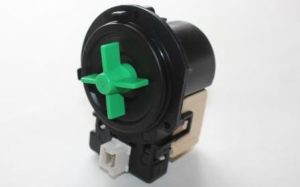
- drain pipe;
- filling pipe;
- powder receiver pipe;
- hatch cuff;
- waste filter seal;
- emergency drain hose (its plug);
- filling valve;
- tank.
Important! Kaiser washing machines have plastic tubs. A bra wire that gets into the tank can pierce it, and this will cause a leak.
Problems with water intake and drainage
Similar problems with Kaiser washing machines can occur in several cases:
- the drain pump has broken down;
- the drainage system is clogged with debris;
- low quality tap water;
- The flow filter of the filling valve is clogged.
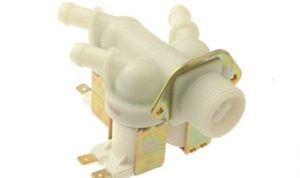 Let’s not exclude trivial situations when the user simply forgets to open the water supply tap, or when the water is simply turned off. Such stupid situations are by no means rare. If the washing machine freezes and error E02 appears on the display, then you first need to check the inlet hose, and then intake solenoid valve.
Let’s not exclude trivial situations when the user simply forgets to open the water supply tap, or when the water is simply turned off. Such stupid situations are by no means rare. If the washing machine freezes and error E02 appears on the display, then you first need to check the inlet hose, and then intake solenoid valve.
If the washing machine displays error E03, it’s time to check the drain pump. It may need to be changed, or perhaps clean - an autopsy and inspection will show. In the future, to prevent the pipes and filters from becoming clogged, do not forget to carry out preventive cleaning of the washing machine using special products. To do this, you need to buy a product once a year, pour it into the powder receptacle and run the wash without clothes. In an hour, the product will clean the inside of the car, and half of the problems will disappear on their own.
In conclusion, we note that Kaiser washing machines are quite reliable. They cannot be classified as household appliances that need to be repaired frequently. However, these machines also have weaknesses that the user must be aware of. Good luck!
Interesting:
6 reader comments



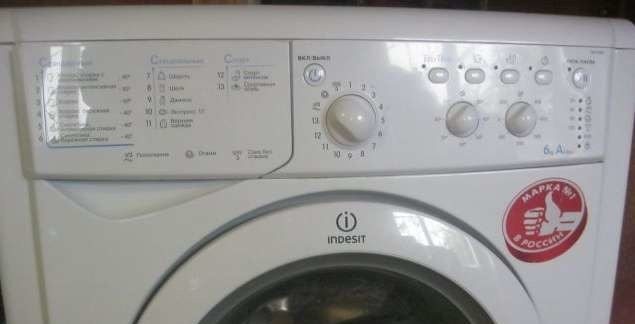
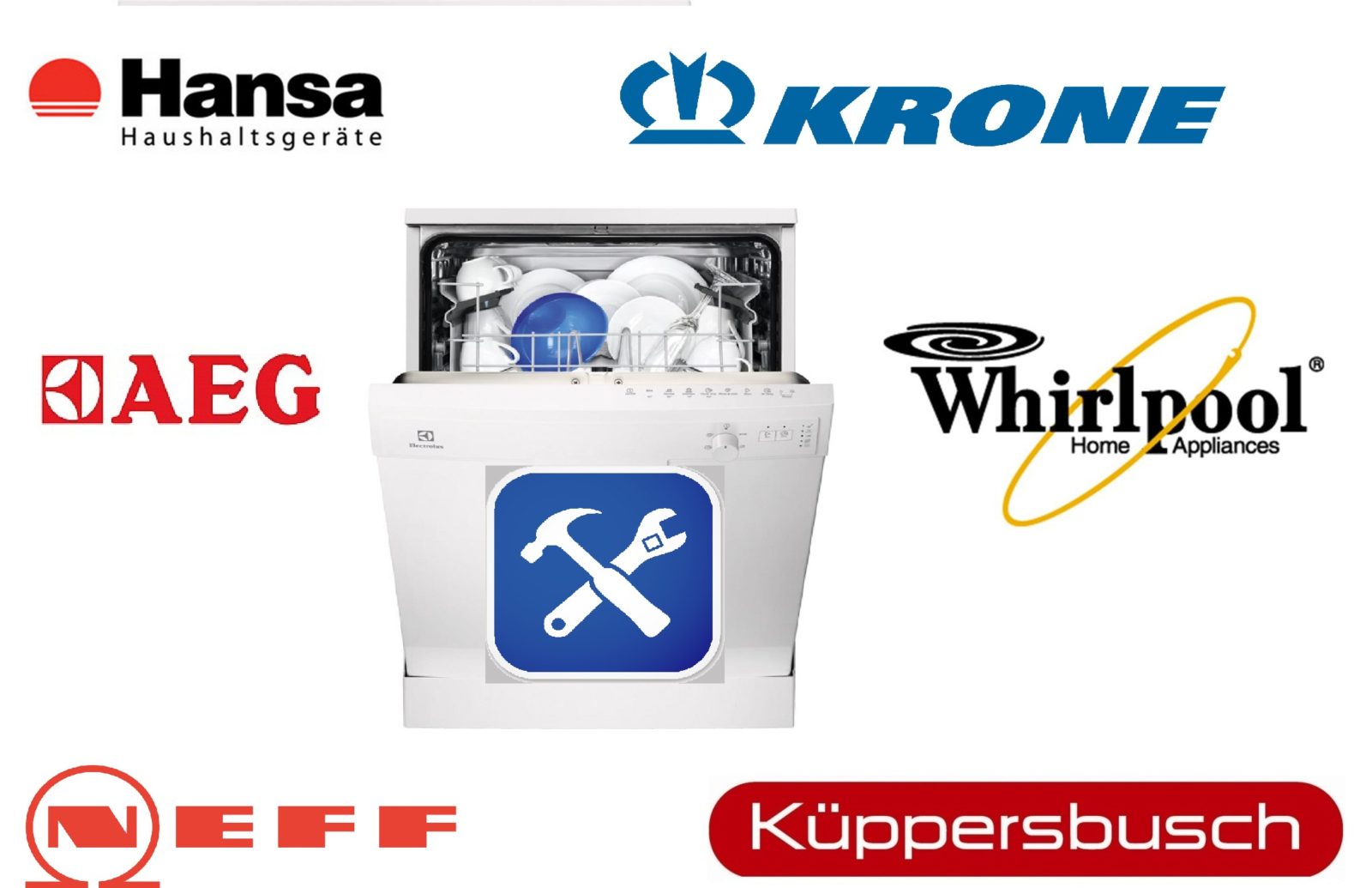
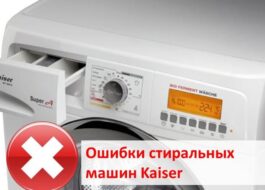















My top loading machine won't turn on. The voltage on the button is all there. The power button works, but when pressed, not a single indicator lights up, there is generally silence. I repeat, I checked the button, there is voltage. What could be the reason? Help!
During operation of my machine, a Kaiser with vertical loading, the drum got jammed with the door down. I can’t turn it with my hands, it’s getting stuck somewhere. What to do?
Useful article, thanks.
Kaiser machine. Doesn't want to wash, does a couple of turns and everything and. After that, I open the lid, and there is water in the drum. It wrings out almost normally. But she jumps so much that the child flinches. You have to turn it off and on again to spin! What to do in such a situation?
Kaiser washing machine. It washes normally, drains the water during washing also well, but the spin cycle does not work. What with her?
I get error e11, please tell me what to do?